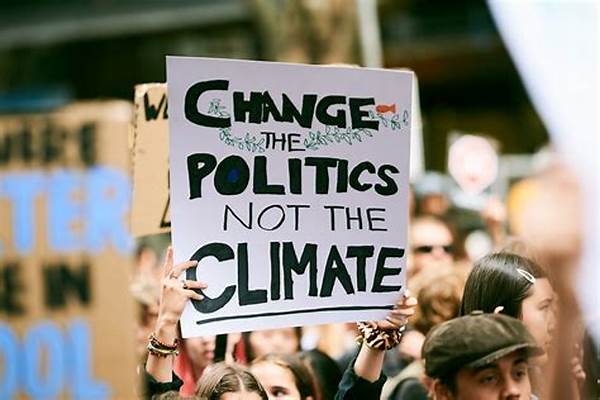In an era where the digital sphere captures more attention than ever, audiovisual media emerges as a powerful tool in communicating critical issues like climate change. Imagine scrolling through your favorite streaming service and stumbling across compelling documentaries or engaging short films that make you ponder the planet’s future. This is the magic of audiovisual media. Not only does it inform, but it also captivates and inspires audiences to act. It’s the ultimate blend of entertainment and education, swaying hearts and minds with vivid imagery and powerful narratives.
Read More : Recommendations For Led Videotron Audio-visuals For Large Stadium Concerts
Have you ever watched a film so impactful that it changed the way you viewed the world? In our current age, where environmental challenges loom like dark clouds on the horizon, engaging audiovisual content acts like a ray of sunshine breaking through, inspiring change and fostering awareness. Think of it as a modern-day call to arms, wrapped in the sheen of cinema or the accessibility of social media videos—media that doesn’t just narrate stories but also galvanizes a revolution.
The Power of Visual Storytelling in Climate Activism
Documentaries that Changed Perspectives
Documentaries stand tall as stalwarts in the world of audiovisual media. By showcasing real-world examples of the impacts of climate change, these films often deliver a heavy dose of reality. Take “An Inconvenient Truth,” for example. This groundbreaking documentary didn’t just tell audiences about global warming; it showed them the facts through compelling data and imagery, coupled with the undeniable passion of Al Gore. The result? A global conversation that ignited interest and built desire for tangible change.
Television and Film for Environmental Awareness
Beyond documentaries, mainstream television series and films have weaved climate change into their narratives to raise awareness. Pixar’s “Wall-E” presents a thought-provoking storyline wrapped in humor and emotion, touching on themes of environmental neglect and personal responsibility. Such movies don’t just entertain; they educate, pulling audiences into a world where the consequences of ignoring climate change are tangible and urgent.
Engaging the Younger Generation
Animation as a Tool for Change
Animation, often dismissed as mere child’s play, is a potent medium for educating younger audiences about climate change. Shows like “Adventure Time” and films such as “Ice Age: The Meltdown” incorporate climate themes subtly, enabling kids to understand complex environmental issues through relatable characters and storylines. It’s infotainment at its finest—teaching without preaching.
Social Media’s Role in Environmental Advocacy
Social media platforms, where video content reigns supreme, are perfect arenas for raising climate awareness. Short videos on TikTok or Instagram Reels distill complex information into digestible clips that catch the fleeting attention spans of the digital age. Through humor, music, and storytelling, these platforms exert a massive influence, converting views into activism, all at the swipe of a screen.
Unforgettable Campaigns and Initiatives
Campaigns Leveraging Emotion and Logic
Campaigns such as “Ice Bucket Challenge” or the “Earth Hour” initiative successfully use audiovisual elements to evoke emotional and logical responses. By intertwining viral challenges with educational snippets, they manage to spark global movements, proving the potent nature of audiovisual content in climate change advocacy.
Celebrities and Influencers: The New Climate Change Evangelists
In today’s interconnected world, celebrities and influencers hold sway over vast audiences. With a single Instagram post or YouTube video, they can mobilize millions. When these high-profile figures leverage audiovisual media to discuss climate change, they humanize complex issues, offering personal testimonials that inspire collective action.
Detailed Analysis of Audiovisual Media Impact
By weaving engaging narratives with real-world data, audiovisual media not only raises awareness but also equips viewers with knowledge and inspiration to become advocates for our changing climate.
Read More : Examples Of Audiovisual Media That Transform Classroom Discussions Into Interactive Moments
A Global Call to Action Through Visual Storytelling
Bridging Inform, Entertain, and Inspire
Audiovisual media, with its impeccable knack for storytelling, bridges the gap between education and entertainment. Through a blend of emotive imagery, compelling narratives, and factual information, these visual mediums manage to transform passive viewers into proactive advocates for the planet.
Shaping Perceptions and Forecasting Futures
By forecasting possible futures, films such as “The Day After Tomorrow” exaggerate climate scenarios to jolt people into realizations about imminent threats. Although dramatized for cinematic effect, such portrayals reinforce the urgency embedded within climate change discussions.
The Educational Ripple Effect
Perhaps the most profound impact of audiovisual media is its ripple effect in education. Teachers incorporating documentaries and films into curricula foster deeper discussions and understanding of environmental science beyond traditional textbooks. It’s education through elucidation, persuasion through participation.
The multi-faceted approach of audiovisual media in addressing climate change highlights its unparalleled efficacy in raising awareness and promoting action. As the digital landscape continues to evolve, so too will the mediums through which we consume information, ensuring climate change remains in the spotlight—and hopefully guiding us toward a more sustainable future.
By recognizing and leveraging the power of audiovisual media, we can turn audiences from passive consumers into passionate climate advocates. It’s not just about showing the problem but, more importantly, inspiring the solution. Join us in this audiovisual revolution to make a tangible difference for our world.
